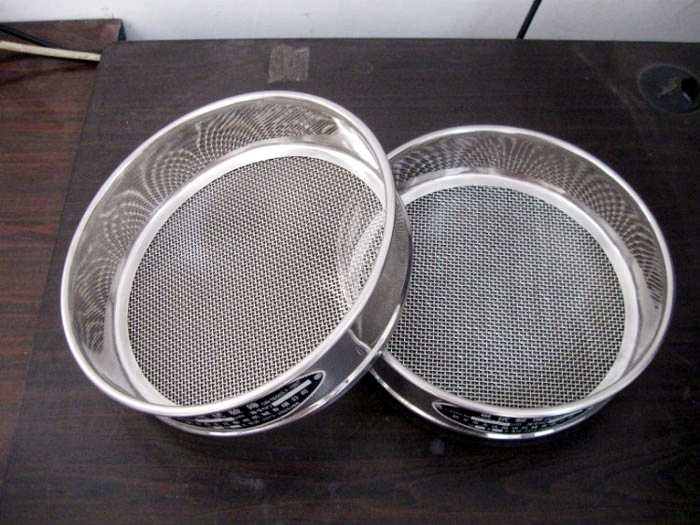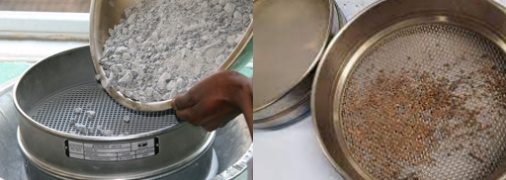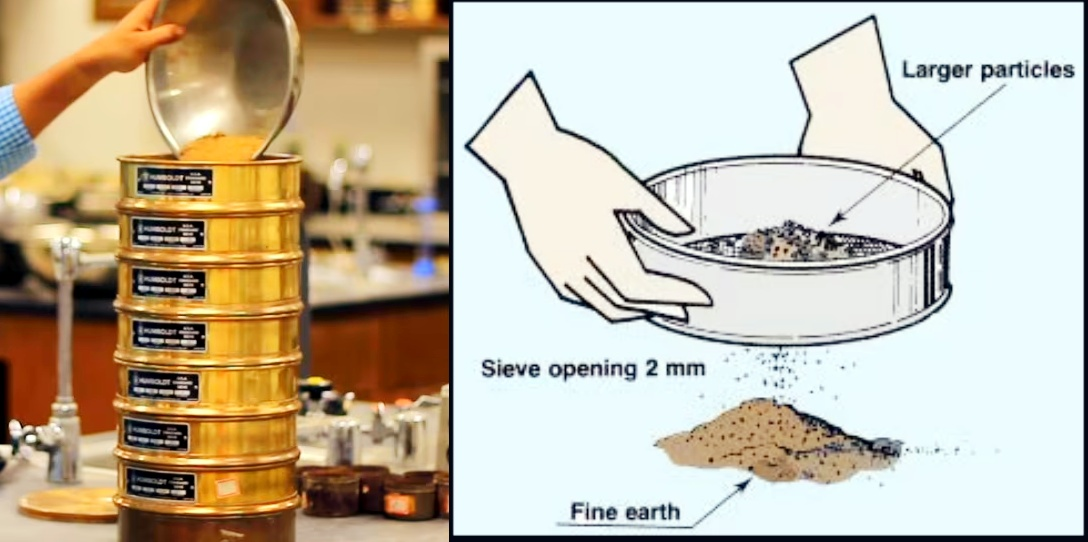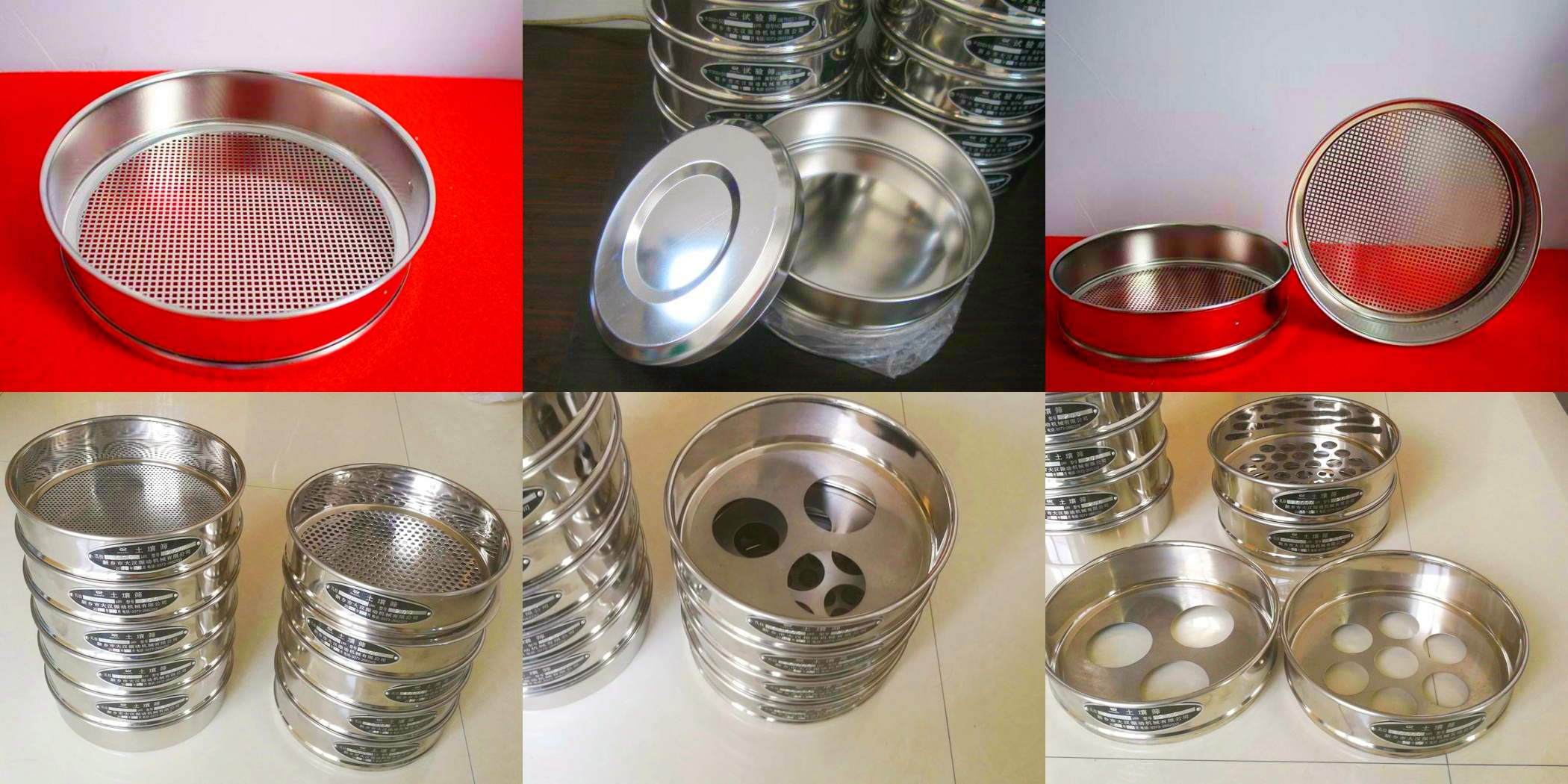Tuesday July-01 2025 15:24:59

A key advantage of agricultural soil test sieves in soil analysis is their precise particle size classification capabilities. Soil samples are complex in composition, containing sand, silt and clay of different particle sizes. Traditional manual screening is time-consuming and has low precision. In contrast, agricultural soil test sieves (such as standard soil sieves or vibrating sieves) use controllable mechanical or electromagnetic vibrations to quickly and evenly stratify soil particles according to pore size.

For example, in soil fertility assessment, test sieves can accurately separate particles of 0.075-4mm, analyze soil texture, and guide fertilization and irrigation; in pre-treatment of heavy metal detection, screening to 0.15mm ensures sample uniformity and reduces analysis errors.

The collected wet soil samples are naturally air-dried, and after removing impurities such as plant residues and stones, the soil lumps are gently crushed with a soil mortar, passed through a 2mm sieve, and some fine soil is taken for screening analysis.
Use a top-impact test sieve or electric vibrating sieve machine, load a set of standard sieves (such as 2mm, 1mm, 0.5mm, 0.25mm, 0.075mm), and pour the processed soil sample into the top sieve:
Start the motor, and the equipment will classify the soil particles in the sieve by knocking up and down and vibrating horizontally; stop screening after 5-10 minutes; weigh the soil mass retained in each sieve layer separately, and calculate the proportion of each particle size.
Organize the screening results into a particle size distribution map to determine the soil type (such as loam, sandy loam, clay, etc.), combined with crop adaptability, to provide a reference for agricultural planting and improvement plans.

|
Mesh size (mesh) |
aperture (mm) |
applicable particle type |
|
10 mesh |
2.00mm |
coarse sand, gravel |
|
20 mesh |
0.85mm |
medium sand |
|
40 mesh |
0.425mm |
fine sand |
|
60 mesh |
0.25mm |
ultra-fine sand |
|
100 mesh |
0.15mm |
silt sand |
|
200 mesh |
0.075mm |
clay, clay, organic matter, etc. |
|
Number of layers |
recommended mesh combination |
instructions |
|
3 layers |
2.00mm/0.85mm/0.075mm |
coarse classification |
|
4 layers |
2.00mm/1.00mm/0.25mm/0.075mm |
medium precision screening |
|
5 layers |
2.00mm/1.00mm/0.50mm/0.25mm/0.075mm |
conventional laboratory particle size distribution test |
|
6 layers |
add 0.425mm and other subdivision levels |
high-precision distribution analysis or scientific research purposes |

Agricultural soil test sieves play a vital role in modern agriculture, and their application runs through many key links of soil analysis. For example, when conducting a census of farmland soil fertility, the collected soil samples first need to be sieved, and impurities such as stones and plant residues are removed using a sieve with a larger aperture (such as a 5mm or 10mm sieve) to ensure the purity of the samples for subsequent analysis.
In order to analyze the chemical properties of the soil (such as determining pH, organic matter, nitrogen, phosphorus and potassium content), the samples will be further ground and passed through a 2mm or 0.25mm fine sieve. This not only makes the sample particles uniform in fineness and improves the efficiency of nutrient extraction, but also meets the strict requirements of the standardized analysis method for sample particle size, thereby ensuring the comparability and accuracy of data between different batches and different laboratories.

In the analysis of soil texture (particle composition), a series of standard sieves (such as 2mm, 0.05mm, etc.) can be used to accurately separate sand, silt and other components of different particle sizes, providing a scientific basis for evaluating soil water retention capacity, aeration and crop adaptability.
In the field of agriculture, the test sieve is a basic tool for analyzing soil structure. It provides a scientific basis for agricultural production through particle classification, especially in high-standard farmland construction, agricultural scientific research, fertilization decision-making and soil and water conservation projects. It plays an irreplaceable role. The test sieve not only improves the efficiency of soil analysis, but also improves the reliability of data, providing an important guarantee for agricultural scientific management.
What is the wet sieving process?
Wet sieving process is a sieving process assisted by a liquid (usually water or a solution containing a dispersant) to more effectively...
Fines content tester can be defined as an instrument used to quantitatively determine the content of fines powder components of a specific fineness...
Micro silica powder particle size analysis test sieve
Micro silica powder, also known as silica fume, is an ultrafine active silica material with a very small particle size, usually between 0.1-0.3 microns, which...
Agricultural gruesos Test sieves
Agricultural gruesos test sieves are experimental equipment used for particle size analysis, grading and testing of agricultural soil, gruesos...
Stainless steel frame and woven cloth
The test sieve is a laboratory equipment used for particle size analysis. Its core components usually include a stainless steel frame and woven cloth (also called a sieve)...
Top impact sieve for particle size inspection
Top impact sieve is used for particle size inspection. It is a detection method that realizes the particle size classification and quantitative analysis of solid particles through...
Jul 01, 2025
Application sand Specifications of Agricultural Soil Test Sieves
The agricultural soil test sieve is a screening device for accurately grading soil particles, which i...
Jun 30, 2025
Top impact sieve for particle size inspection
The top impact sieve effectively realizes the particle size classification and quantitative analysis ...
Jun 28, 2025
The size of soil sieve mainly refers to the sieve frame diameter (commonly used 200mm, 300mm, etc.) a...
Jun 28, 2025
Electromagnetic powder ultrasonic test sieve
Electromagnetic powder ultrasonic test sieve is a fine screening equipment that combines electromagne...
![]()
Then we look forward to hearing from you
Contact Us
Industrials
Yanjin county forest park gate to the west 1000 meters north road sitemap
